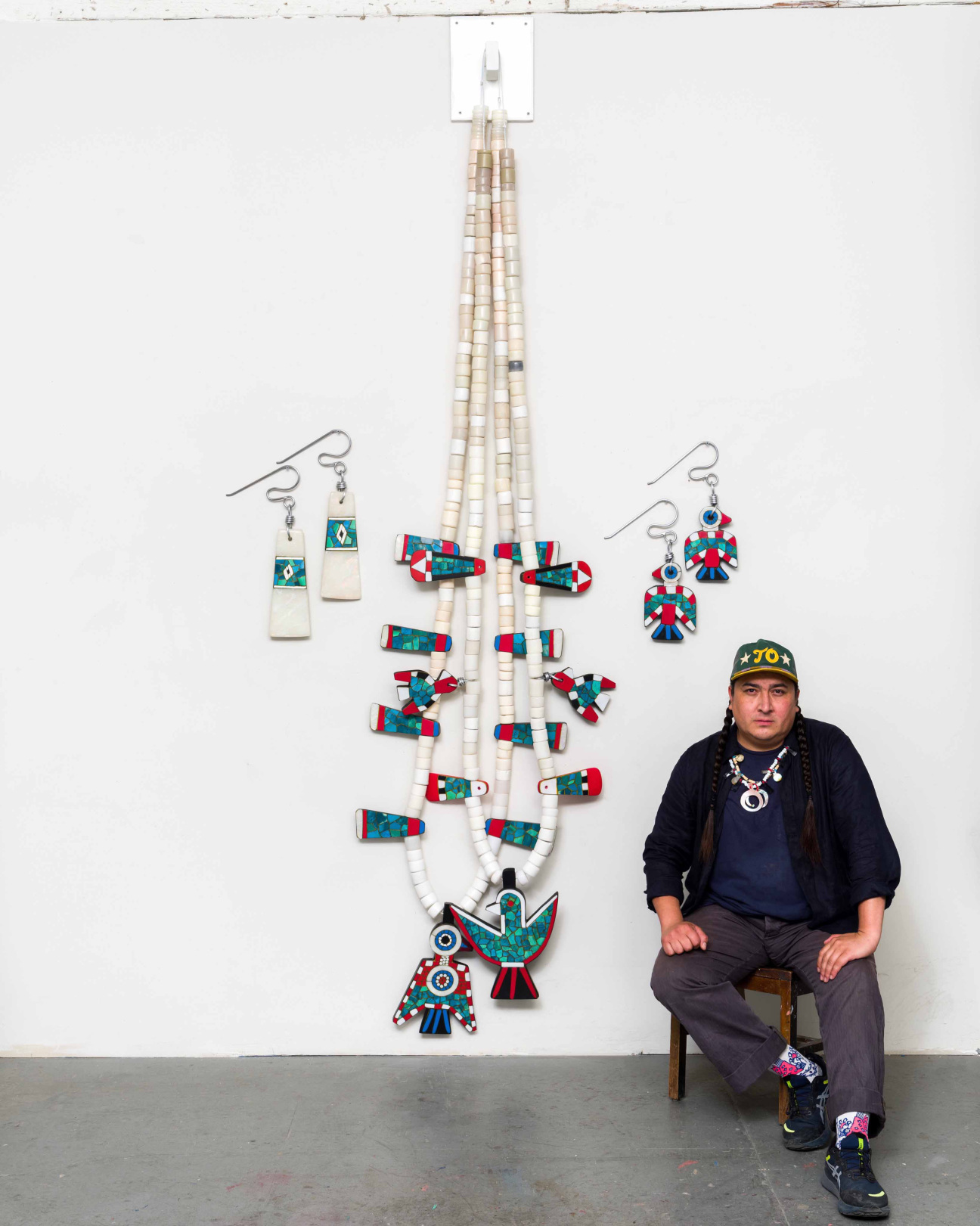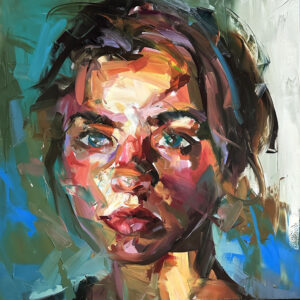
An artist’s studio is a haven—a sounding board for ideas good and bad, a companion on dark days and inspired ones. These spaces play occasional host to curators, collectors, and friends, but in the day-to-day hum of creation, they wrap their protective arms around their artists, enveloping them. CULTURED asked six makers whose work spans the disciplines of architecture, performance, painting, and sculpture to reflect on their relationship to music, and share the sounds that keep them company in the studio.
Ishi Glinsky’s practice mimics the meticulous virtuosity of a composer. The Los Angeles-based artist is tied to the landscape—and baseball team—of his adopted home, but through his work he digs into the traditions and creative ecosystem of his tribe, the Tohono O’odham Nation, and other North American First Nations. This summer, Glinsky will bring these concerns, and their material articulations, to the fore as part of the Hessel Museum of Art’s “Indian Theater: Native Performance, Art, and Self-determination Since 1969,” and Tiwa Select’s presentation at the North American Pavilion in London. In the fall, the artist heads back to LA, where he will be featured in the Hammer Museum’s “Made in L.A. 2023: Acts of Living.”
What sounds have influenced the work that you’ll be showing at the biennial?
One facet of my next sculpture is inspired by the stillness and silence of the start of a powwow. It’s about creating a memory of viewing and participating in the Grand Entry of a powwow, while also zeroing in on the regalia and objects that create a roar, [the] concert of sounds mostly meant for healing.
What’s your favorite way to listen to music?
Headphones. I like to keep what I’m listening to private. I have a shared studio space, but even if no one is around, I’d rather crank up my headphones than use a speaker.
First sonic memory?
Quail songs and thunder from the summer monsoons. The sound and smell of desert monsoons are very particular to the Southern Arizona desert and different from anywhere else.
Favorite sound?
My partner’s laugh, gessoing a canvas, the sound of a home run.
What sounds do you associate with LA?
I live and work in downtown Los Angeles, so now the predominant sound is construction. But being in Los Angeles, there are so many folks from around the world that work, live, and visit here that help create many associative sound memories. I couldn’t pin down one identifying sound.
What’s the best studio soundtrack?
I like to listen to [Los Angeles] Dodgers games—it’s less distracting to listen to them when I paint than to watch them. Radio is best for productivity. I also have a rotation of Indigenous-focused podcasts. I suppose one unique approach is, I’ll put the Hardcore History podcast over space ambient music on YouTube as a nice way to break up the density of the subject matter. Otherwise, it’s a mix of NTS mixtapes, powwow songs, Northern Cree, Philip Glass, ’90s rave, and West Coast rap. The last albums I liked were Praise a Lord Who Chews But Which Does Not Consume; (Or Simply, Hot Between Worlds) from Yves Tumor and Once Twice Melody from Beach House.
What is the role of sound/music in your practice?
There are certain songs that are sung by my Nation [the Tohono O’odham Nation] while making things. I’m trying to learn and think more about that in association with my own work.
How does it feel to be included in the “Made in L.A.” biennial selection?
I’m truly grateful to be a part of this incredible grouping of artists and really happy for more visibility on my work.
Which musicians have inspired your work?
Earlier on in my formative artistic years I’d say the Downtown 81 soundtrack was in heavy rotation, along with Philip Glass and Yellow Magic Orchestra.
Below, listen to a playlist of Ishi Glinsky’s favorite artists and songs.










 in your life?
in your life?

